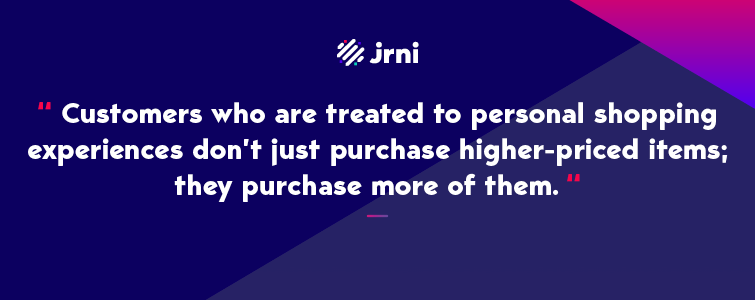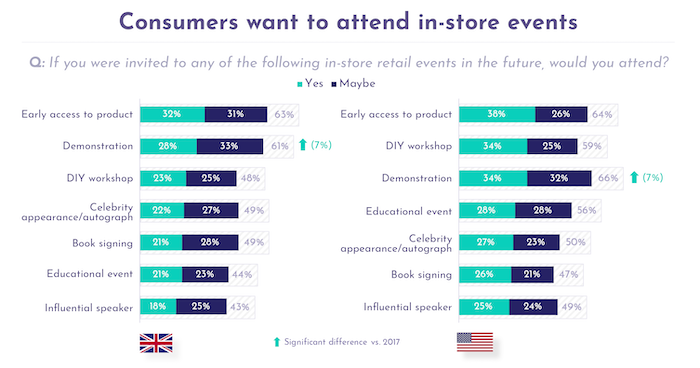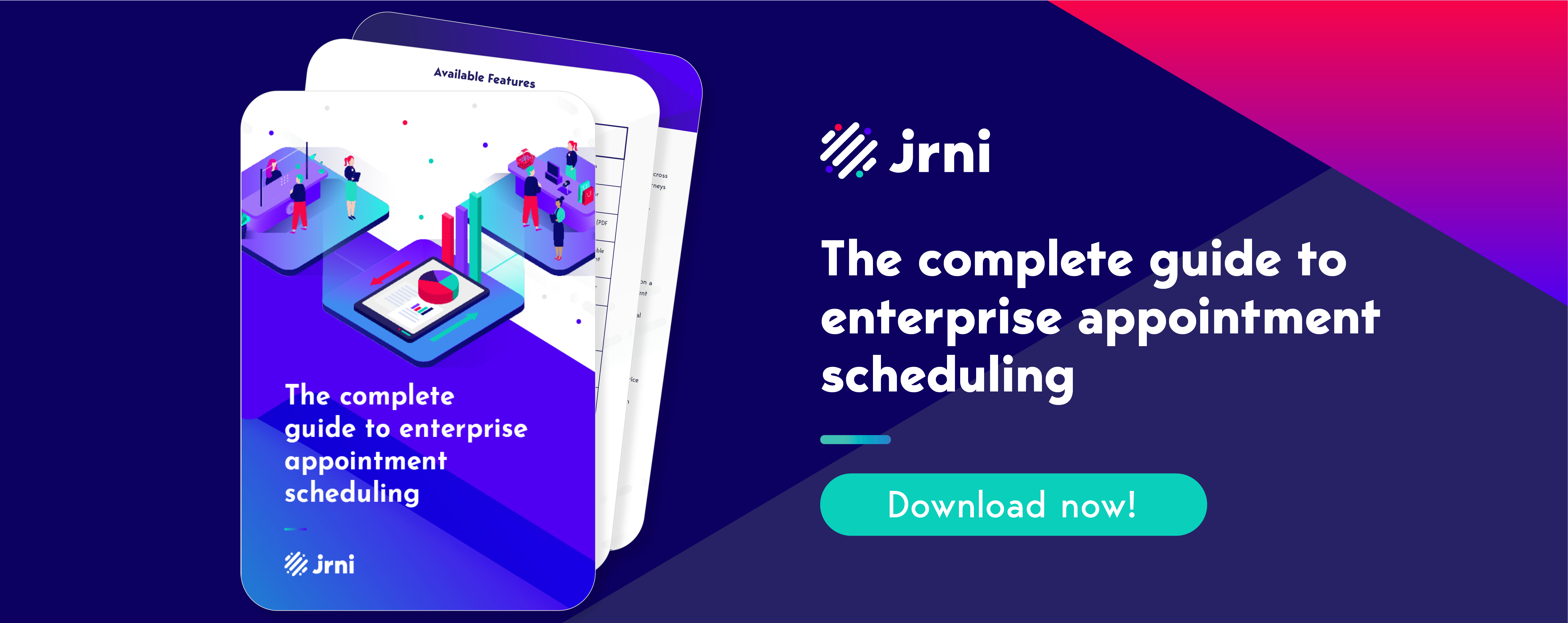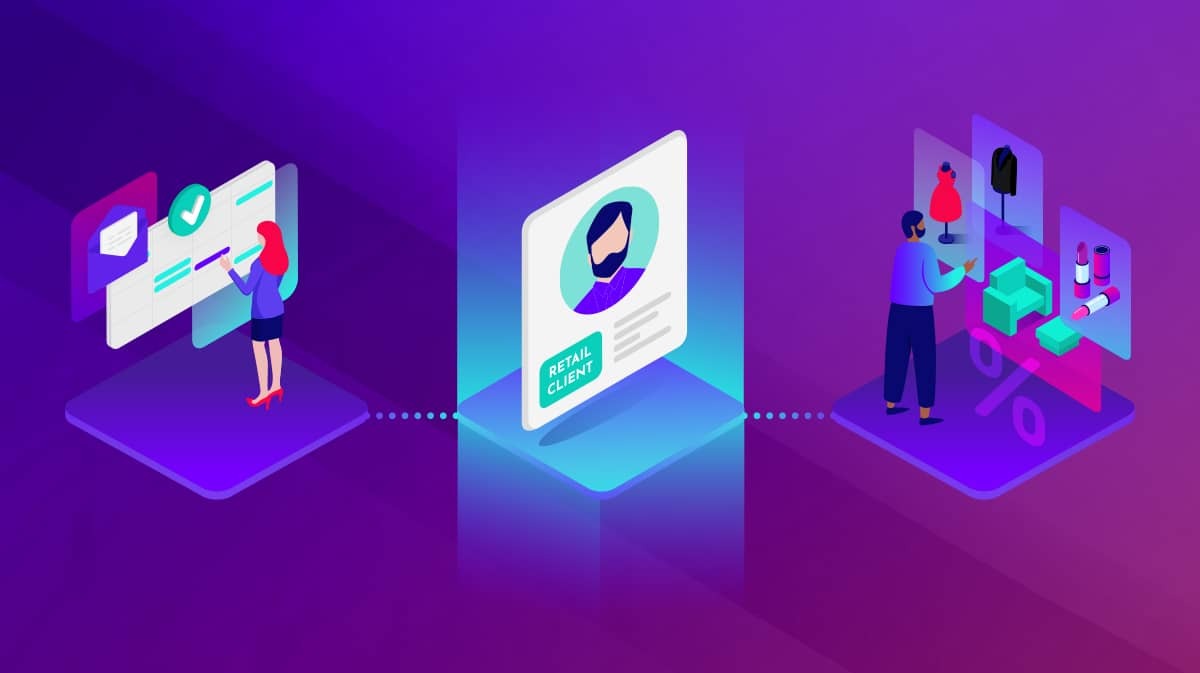As we enter 2020, retailers are challenged to differentiate themselves by delivering great customer experiences. The extent to which retailers turn those efforts into customer loyalty and larger basket size will determine their ultimate profitability. PwC underscored the need to reap profits from improved customer experiences in its Global Consumer Insights Survey 2019. In fact, the survey’s actual title speaks volumes: It’s time for a consumer-centered metric: introducing ‘return on experience.’
The ideal way to measure the return on customer experience, particularly for brick-and-mortar retailers, is to measure basket size. Retail basket size tells a retailer the sales value of each customer visit to a store, and the quantity of items that makes up that sales number. As retailers invest in experience-focused strategies and tactics – such as personal shopping and personalized promotions – they can measure basket size growth to determine the return on those investments.
In this post, we explore experience-focused tools and how they help boost basket size in retail, both on their own and as part of a combined strategy.
Here are six ways to increase basket size:
- Offer personal shopping
- Run events
- Use an advanced POS system
- Perform market basket analysis
- Offer appointment scheduling
- Strategically use click and collect
1: Personal shopping increases product quantity
Personal shopping appointments are the powerhouse of connecting with consumers. After all, a retailer can create a team of trained experts that meet with customers in person, understand and analyze their needs, and then create a personalized shopping experience. It’s no wonder iconic luxury department store Lane Crawford – China’s first luxury omni-channel fashion retailer – sees basket sizes driven by pre-booked personal shopping experiences that are nearly four times larger than the average sale.
Customers who are treated to personal shopping experiences don’t just purchase higher-priced items; they purchase more of them. The right guidance can help customers go from buying a dress, to buying a full outfit that includes shoes, a purse, and jewelry.
Leading retailers are taking two critical steps to maximize the return on their personal shopping service:
- Training personal shoppers in a unique manner
- Segmenting their customer base
Retailers that train personal shoppers on soft skills, such as those displayed by a concierge with deep product knowledge, can quickly gain a customer’s trust and loyalty. By investing in soft-skills training, retailers can transform sales associates into the customer’s confidant. Rather than push a product sale, the sales associate (or personal shopper) makes appropriate, high-value product recommendations in line with the customer’s desires. The long-term effect is higher customer trust, repeat purchases, and greater loyalty and basket sizes.
Savvy retailers offering personal shopper programs have also learned to segment out their high-value customers from the rest of their customer base. By collecting data from personal shopping appointments, a retailer can quickly gain insights such as:
- Who has purchased the largest baskets over time
- Which customers have the most shopping visits in a six-month period
- Who is a top referrer of other customers
Learn more: How to increase personal shopping appointments

2: Run events concurrently with appointments
With the convenience of mobile and online shopping, consumers need more than a wide selection and discount pricing to drive them into physical locations. They want exclusive events and in-store experiences that connect them to their passions and interests.
Our 2019 Modern Consumer Research on the types of events customers are looking for from their favorite retailers provided key insights. Specifically, it found that special occasions like new product launches, demonstrations, DIY workshops, experiential education, and celebrity appearances would entice more than half of consumers in the US and UK to visit a store.

3: Advanced POS systems bring cross-sell and up-sell opportunities
Though retailers are wise to draw high-spending customers into the store for personal experiences in order to grow basket size, they can also call upon in-store technology to boost purchases.
“Regular customers” (i.e., those who aren’t guided through a personal shopping experience) also tend to increase their basket size at retailers that leverage advanced POS systems enabling consistent up-selling and cross-selling by any sales associate. At the time of customer checkout, a robust POS system can instantly consider old or unusual stock, marked-down items, and inventory that is not moving through other channels and locations to suggest real-time offers for the customer. On the employee’s screen at the counter, prompts aid the salesperson in recommending these additional products.
A POS can aggregate a broad array of data, such as that about products related to today’s transaction, products recently purchased by other family members, and even products that complement all family purchases within the last six months.
In essence, today’s retail POS systems can transform the counter from a checkout location to a basket growth opportunity. After all, the customer is already in buying mode and more likely to be influenced by complementary offers while in that state of mind.

4: Market basket analysis
The fifth way retailers can grow basket size is by performing market basket analysis, or MBA, to better understand customer purchases across a wide range of factors and for multiple purposes. As with a modern POS system, MBA delves into past purchases to glean insights. Yet, unlike a POS system, MBA allows a retailer to analyze purchases far beyond their own customer base.
As an example, a retailer can purchase big data and transactional data from third-party sources, run analytics software against that data, and discover patterns across a much broader market of buyers. Potential findings are virtually limitless, such as the:
- ‘Must-have’ products at a home improvement store during the holiday season
- Three items that women most frequently purchase after 5 pm on weekdays
- Most-purchased products on Black Friday where the temperature is below 40 degrees Fahrenheit
Since retailers can potentially drive high returns by performing MBA, those lacking the necessary experience and creativity often hire a specialist analytics firm to conduct the analysis.
5: Appointment scheduling software lifts engagement and sales
Retailers are leveraging appointment scheduling solutions to engage customers over the last decade. That said, today’s enterprise-class appointment scheduling solutions provide seamless integrations, powerful analytics and, perhaps most importantly, omnichannel conversion capabilities.
As customers engage a retailer on the web or within a mobile app, they may find it helpful to be able to book an appointment to address their specific needs. No matter the channel the customer uses, the software can collect information from them in advance and use that data to help in-store staff prepare for their appointment and deliver an outstanding experience.
After just a few months of using a modern appointment scheduling solution, a retailer should have new and valuable data at its fingertips that can be used to drive sales and larger basket size. The analytics capabilities of an enterprise-class appointment scheduling solution can offer fast and accurate answers to important questions, such as:
- What are the top three types of appointments in terms of sales?
- Which appointment types are most popular among existing customers?
- Which appointment types are most popular among new customers?
- Which staff members are performing the best in terms of basket size (by store, by geography, etc.)?
- Which partner companies can complement our offers to drive more appointments?
Once retail managers and their executive teams recognize the value of certain appointment types and from which channels they originate, they can invest in targeted sales and marketing campaigns that deliver higher returns.
The type of return on customer experience is impressive with appointment scheduling software. Here is the ROI we see across our customers:
- 80% increase in conversions
- Up to 5x increases in customer spend
In fact, one of our customers – a multinational retailer – realized a 3x lift in basket size with online appointment shoppers. Another customer – a department store retailer with 800 locations – saw 200% larger basket sizes for appointment-based customers than walk-in customers.
Learn more: The complete guide to enterprise appointment scheduling
6: Strategically organize click and collect services
Click and collect is becoming a common choice for today’s busy shoppers. Our latest research shows that 54% of consumers use click and collect, a 4% increase since our previous study. Recognizing the tremendous value in this option, stores like Bed Bath & Beyond, Best Buy, Macy’s, Nordstrom, and Urban Outfitters have launched click and collect options in recent years.
Click and collect is another purchase channel that can be strategically designed to boost basket size. By moving the merchandise pick-up location to the back of their stores, retailers ensure customers walk through additional aisles. As customers do this, they are exposed to hundreds of products they wouldn’t have seen otherwise – greatly increasing the chance they’ll make an impulse purchase.
In conclusion, experiment with omnichannel customer experiences that suit your customers.
As a retailer, your goal for 2020 should be finding the right blend of solutions and in-person interactions to form a stronger bond between your customers and your in-store professionals. Achieving this will give you the personal relationship advantage and customer loyalty that you simply cannot win via online-only interactions. By calling upon the six strategies outlined in this post, you can do just that to improve the customer experience – and realize larger basket size in the process.
Appointment scheduling can boost both engagement and sales. Check out our latest resource, "The complete guide to enterprise appointment scheduling software" to learn more.




